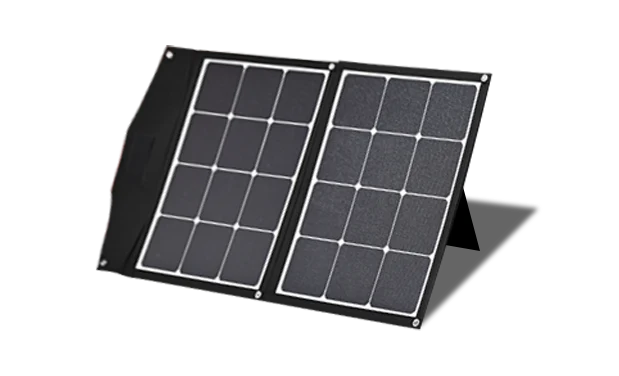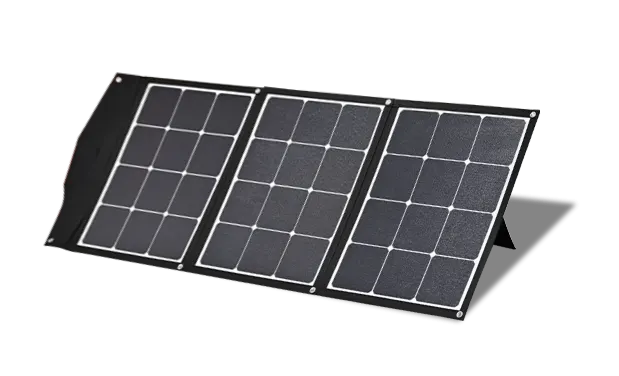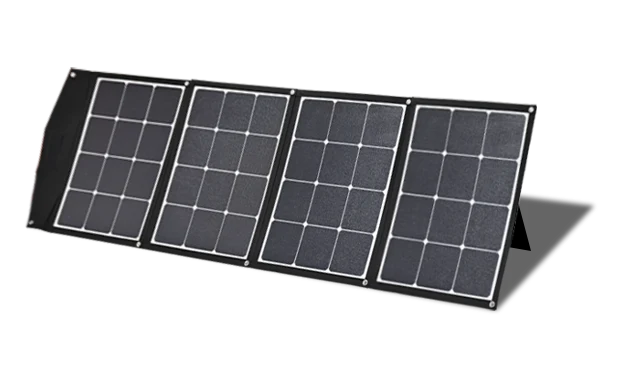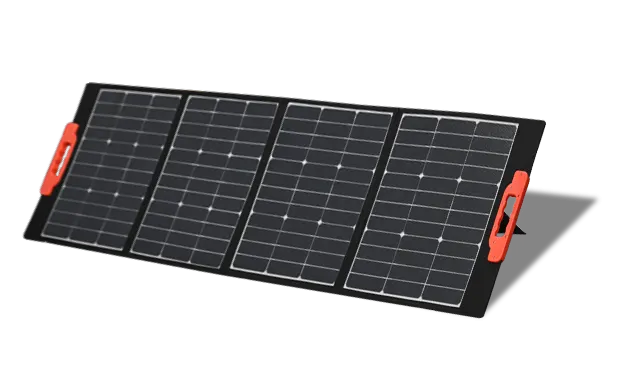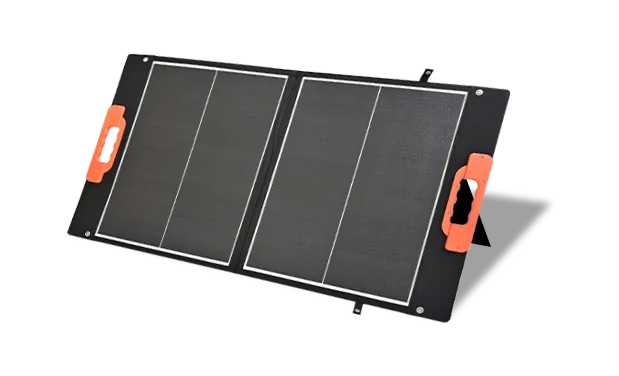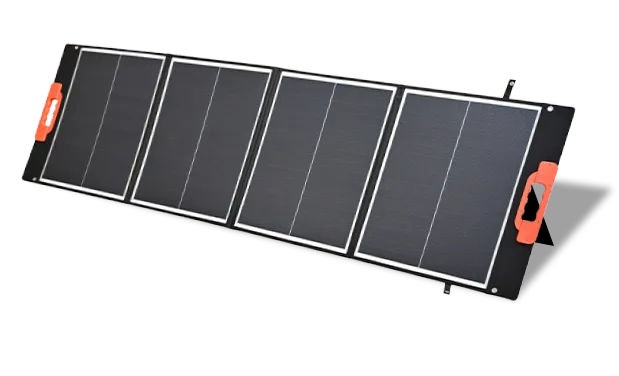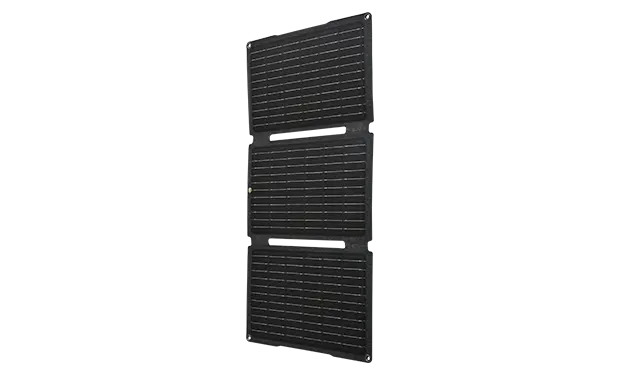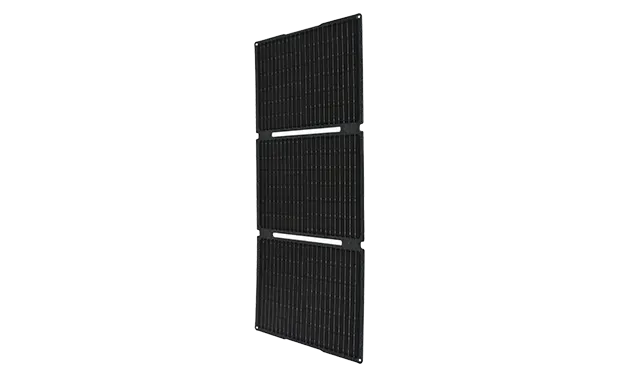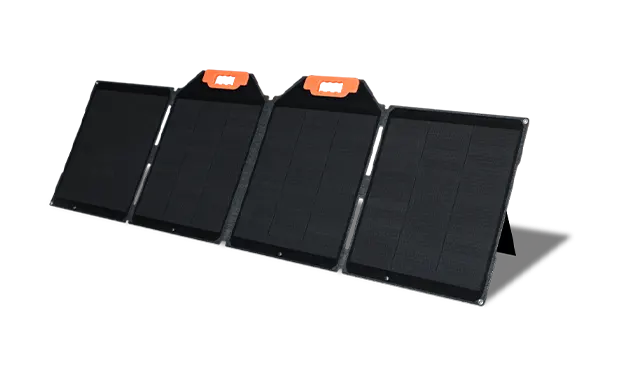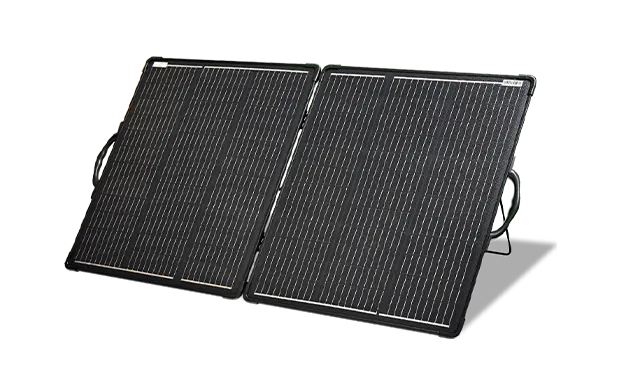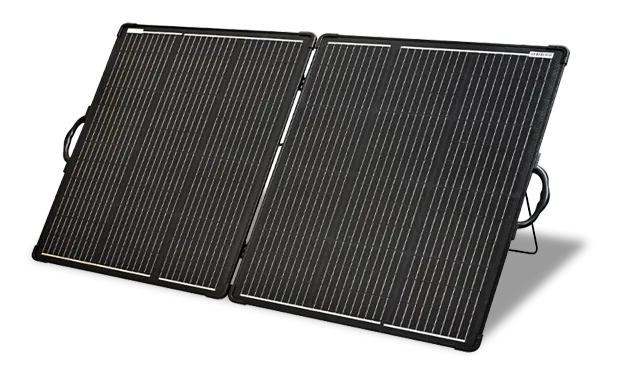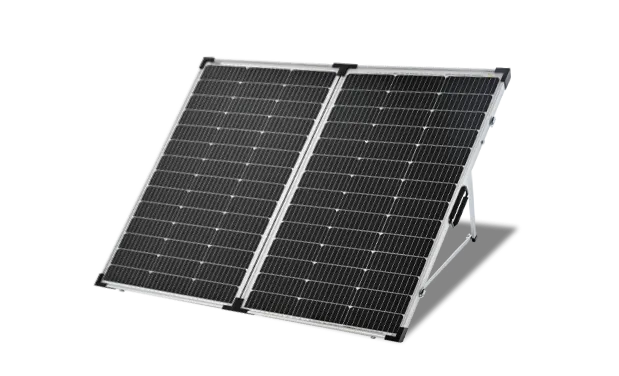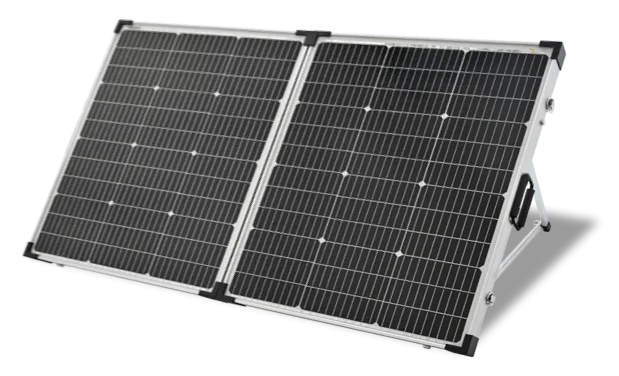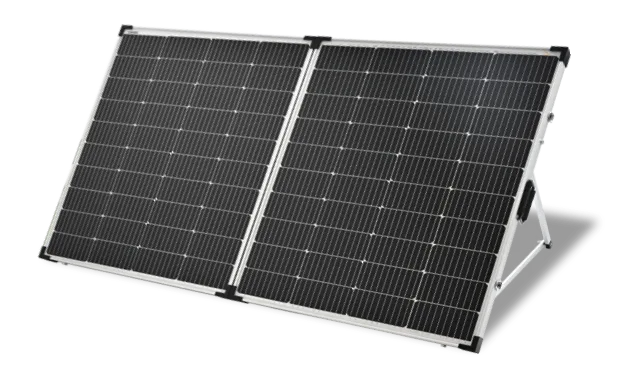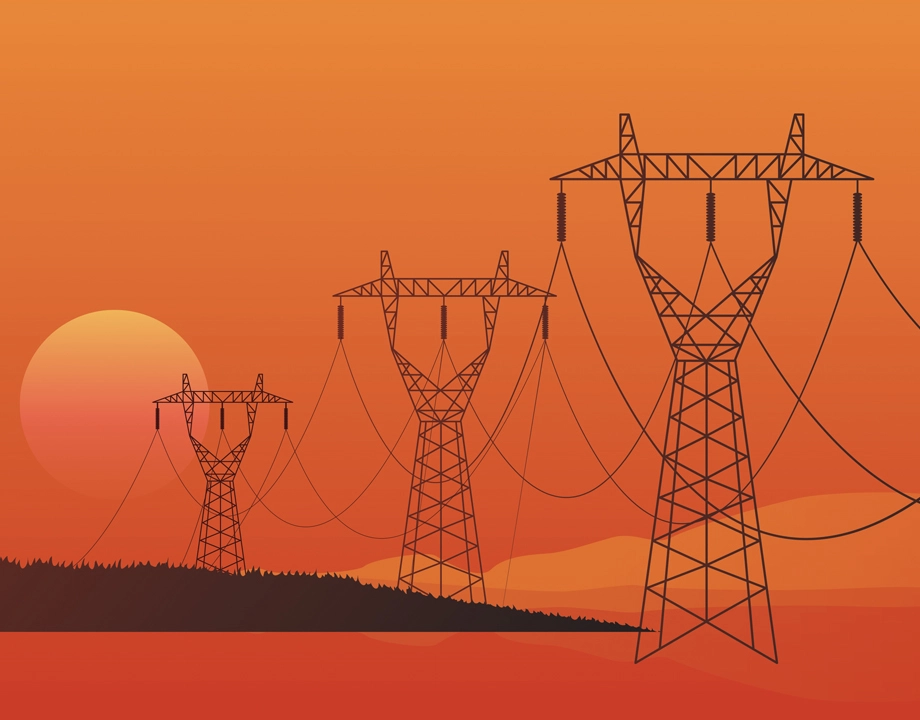Power outages are a widespread topic in everyday life and many people suffer from them. However, a rolling blackout is different in that it is an intentionally designed power shutdown that is designed to avoid larger-scale blackouts due to a mismatch between power supply and demand.
In this article, we will briefly answer a few of your questions, we’ll take an in-depth look at how rolling blackouts work and whether you can expect them to have an impact on the grid in your area.
- What is a rolling blackout?
- How long do rolling blackouts last?
- The causes of rolling blackouts
- Advice on how to prepare for blackouts
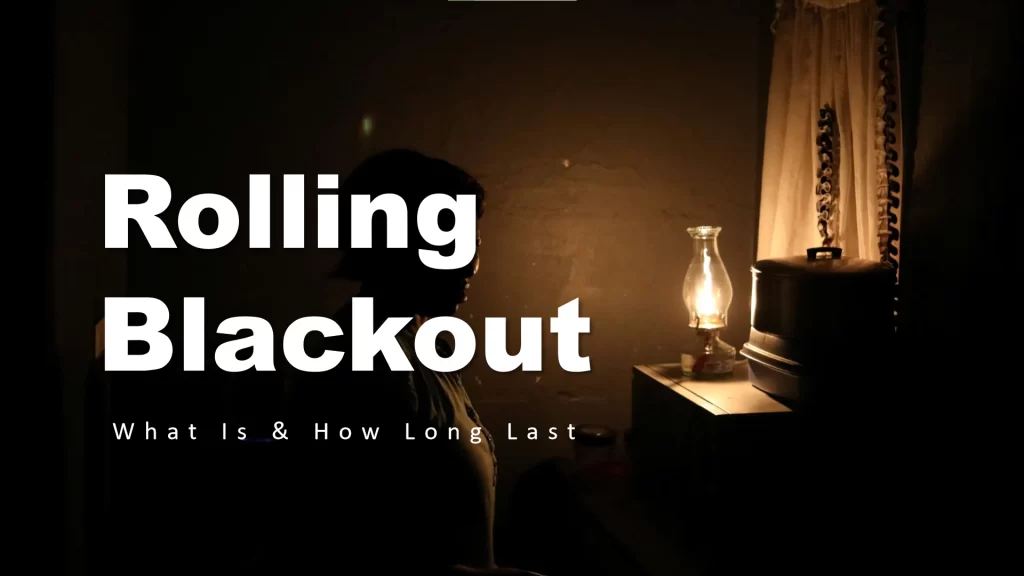
What Is A Rolling Blackout?
Rolling blackout is an emergency response measure taken by grid operators when faced with an imbalance between electricity supply and demand. It is a planned, temporary outage designed to balance the supply of electricity in a given area to prevent overloading of the grid while minimizing the impact on residential areas.
History of Rolling Blackouts: Rolling blackouts began to appear in the 1970s when the U.S. power system was facing serious problems. The stability of the power system was threatened due to the increased demand for electricity and the aging of the power system. Rolling blackouts are a countermeasure to the instability of the power system that can help it maintain stable operation.
Unlike outages triggered by physical damage to power lines or power plants, rolling blackouts are an orderly procedure. By shutting off power to a series of residential neighborhoods or parts of a city one at a time, grid operators can effectively spread out the power demand, thereby avoiding overloading the entire grid. This approach ensures that no neighborhood is without power for an extended period, thereby reducing the inconvenience of power outages for residents.
While utilities typically warn customers of outages, rolling blackouts are sometimes difficult to accurately predict in advance due to fluctuating power demand and other factors and thus may occur with little to no warning. This leaves utilities needing to make quick decisions on short notice to respond to sudden changes in the power system.
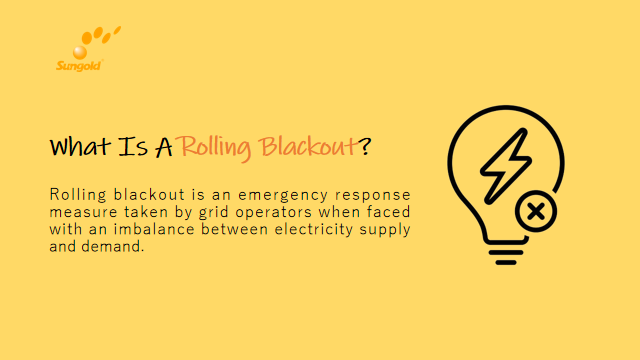
How Long Do Rolling Blackouts Last?
How long does a power outage last? The duration of rolling blackouts can vary depending on the specific circumstances and severity of the situation. In general, rolling blackouts that are implemented to prevent grid overload typically last around an hour. However, during extreme weather conditions or other severe events, the duration can be longer.
Typically, rolling power outages are designed to be temporary measures to address immediate imbalances between electricity supply and demand. As mentioned, in less severe cases, the outage may last 1-2 hours, and electricity is then restored as the grid stabilizes.
In more severe events, such as extreme weather conditions or significant disruptions to the power infrastructure, rolling blackouts may extend to 4-6 hours or even longer. The extended duration is often necessary to address and rectify the underlying issues causing the imbalance in the power grid.
It’s important to note that the exact duration of rolling blackouts can vary by region, the nature of the emergency, and the efficiency of utility companies in resolving the issues that led to the need for the blackouts in the first place.
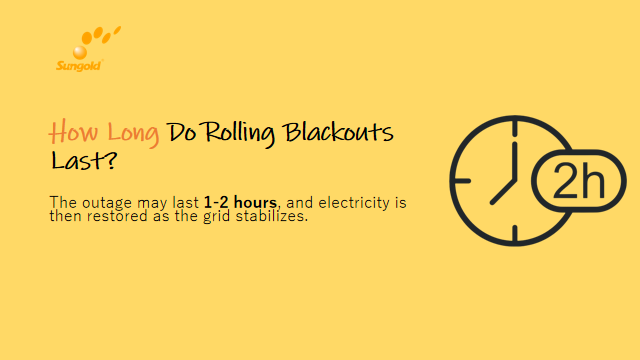
What’s the Reason for Rolling Blackouts?
Rolling blackouts are most likely to occur during periods of high power demand relative to the available supply, and this can happen in any season. However, specific weather conditions or events can exacerbate these situations. In the example provided, winter blizzards, storms, or heat waves can strain the power grid, leading to an increased likelihood of rolling blackouts.
For instance, severe winter storms, as seen in the 2021 case in Texas, can create a surge in energy usage, especially for heating.
ERCOT Texas Grid Rolling Outage is an efficient outage planned by the Electric Reliability Council of Texas to avoid further damage to power plants and Texans due to the storm. The combined impact of the storm’s severity and the heightened demand for heating overwhelmed regional power infrastructure, including power plants, wind turbines, and natural gas plants. The Electric Reliability Council of Texas (ERCOT) had to implement rolling blackouts to prevent further strain on the grid and protect it from serious damage.
Why are they doing rolling blackouts? The underlying reason for rolling blackouts is to maintain the stability of the power grid and ensure a balance between power supply and demand. When demand surpasses the capacity of power generators to meet it, the grid becomes overloaded. Implementing rotating outages is a preventive measure, easier to manage than a complete grid shutdown, and helps protect critical locations like hospitals.
The need to turn off power during such situations is rooted in the necessity to maintain the grid at a specific frequency, such as 60 hertz for the Texas power grid, for proper functionality. If the energy demand exceeds what the power generators can handle, the grid will become overloaded, risking serious damage.
How to Know the Rolling Blackout?
Usually, the electric regulatory system gives advance notice, but you can also use the rolling power outage map to find out when rolling outages will occur in your state.
Will There Be a Rolling Blackout in 2024?
Yes, every year there are many power outages triggered by natural disasters, man-made accidents, or resource price increases that may result in a mismatch between energy demand and supply.
To circumvent the inconvenience that widespread outages can cause to production and life, the Public Utilities Commission will adopt rolling blackouts to reduce the burden on the grid in 2024.
Rest assured that the Public Utilities Commission will issue a notice before a rolling blackout occurs, ensuring that you have plenty of time to prepare for everything you need during the outage.
How to Prepare for Rolling Blackout?
Typically rolling blackouts don’t last long and you only need to prepare a few essentials simply, here’s a list of must-have items we’ve put together for you for rolling blackouts:
| Lighting and Power | – Flashlight and spare batteries |
| – Candles and lighter/matches | |
| – Power bank and portable solar panels for charging phones and devices | |
| – Non-powered light sources, e.g., hand-cranked LED flashlight | |
| Warmth and Comfort | – Warm clothing, e.g., blankets and hand warmers |
| Food and Water | – Non-perishable food items, e.g., canned goods, biscuits, nuts |
| – Adequate water supply for at least one day | |
| Health and First Aid | – Basic first aid kit including necessary medications |
| – Backup supply of essential medications if needed | |
| Documents and Communication | – Backup copies of important documents, e.g., ID, insurance |
| – Consider alternative communication methods in case of network issues | |
| Economic Backup | – Small amount of cash for transactions |
| Other Considerations | – Regularly back up computer files to prevent data loss |
| – Ensure fuel or charging capability for generators or portable power stations |
How can I Prevent Rolling Blackouts?
Turn off unnecessary appliances: Turn off appliances on the wall, especially if they are not in regular use. Even if the appliance is switched off, it still consumes electricity when it is connected to the socket, so it’s best to unplug it.
Adopt energy-saving habits: Adopt energy-saving measures such as low-temperature laundry and air-drying. These small adjustments can add up to your daily life and reduce electricity usage.
Use high-wattage appliances during off-peak hours: Try to use high-powered appliances during times of lower electricity demand to minimize the burden on the grid.
Use solar panels + portable power stations: Keep a portable power supply on hand for your home to provide power during rolling blackouts. Solar panels can also be purchased as a supplemental source of power for energy storage, which is cleaner and safer. The Sungold Portable Solar Panel HP-S 200W is designed for portable power generation, with a power generation efficiency of 24.40%, and can efficiently and quickly charge a portable power station, solving your immediate needs.
Reduce dependence on the grid: Relying on a grid-connected system, rolling blackouts or daily power outages are unavoidable, coupled with increasing electricity bills, why not try to build an off-grid solar system independent of the grid, Sungold mono-crystalline solar panels are sturdy and durable, with a strong resistance to wind and snow, capable of resisting natural disasters and extreme weather, and able to provide families with a continuous supply of electricity for a long period, which makes them an ideal choice for off-grid systems. Sungold monocrystalline solar panels are a great solution for off-grid systems.
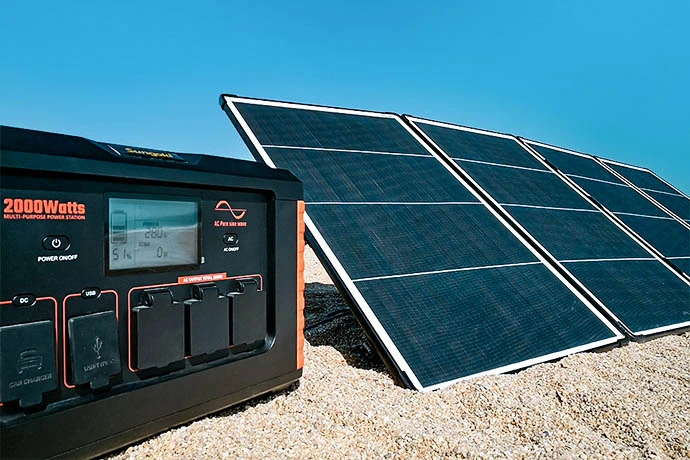

Sungold Solar is a professional off-grid solar solution provider with 15 years of experience in solar panel manufacturing and a wealth of customer cases. If you are planning to build a powerful off-grid system or buy high-power solar panels, contact us.





